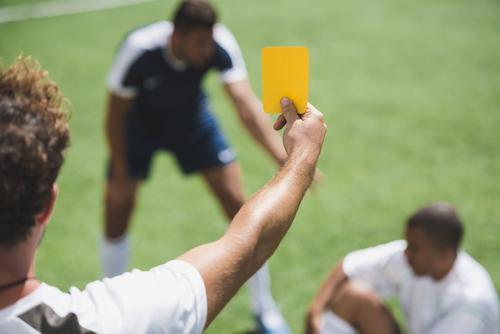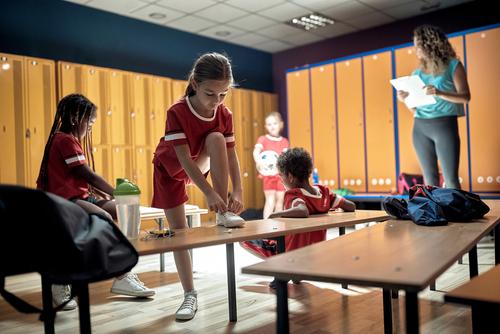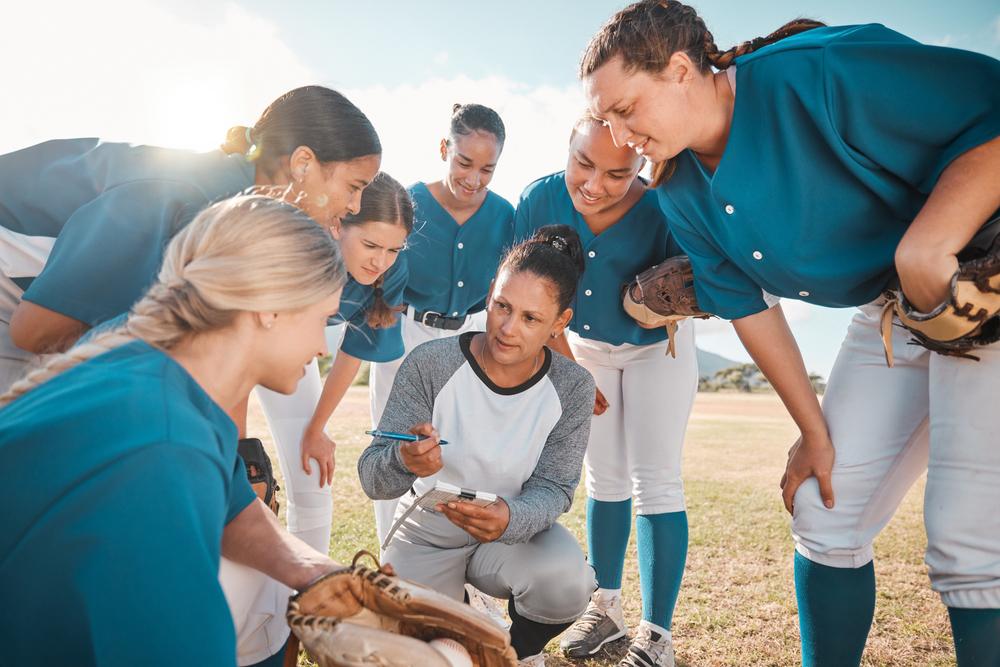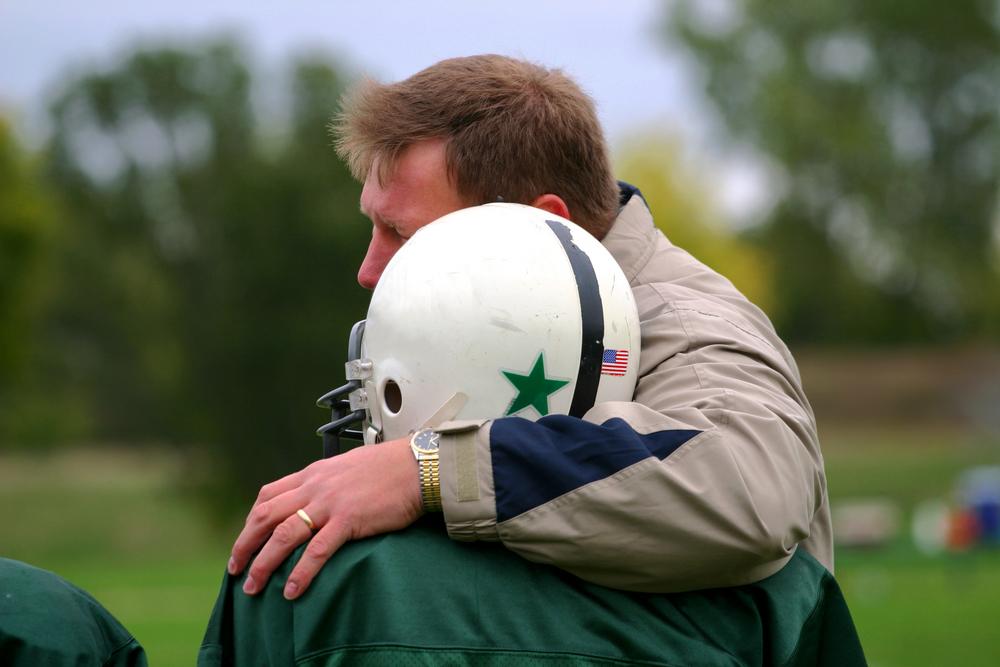 It’s easy to get into routines as a longtime coach: You likely know exactly what tactics work best, how to best run practices, and who needs to sit where on the bus heading to meets. But in addition to the physical and logistical sides of team sports, you’re also in charge of the team culture.
It’s easy to get into routines as a longtime coach: You likely know exactly what tactics work best, how to best run practices, and who needs to sit where on the bus heading to meets. But in addition to the physical and logistical sides of team sports, you’re also in charge of the team culture.
Most coaches want to build a team that has a strong culture of mental wellness, but may be unsure where to start. Here, TrueSport Expert Kevin Chapman, PhD, clinical psychologist and founder of The Kentucky Center for Anxiety and Related Disorders, is sharing a few ways to start prioritizing strong mental wellness for your team. It’s not all positive self-talk and mantras, though those can be helpful. Rather, Chapman is a fan of embracing the full range of emotions, and helping athletes understand and acknowledge their feelings.
Normalize talking about emotions… especially the negative ones
Often, we get caught in the trap of assuming mental wellness means being positive and upbeat at all times. But in reality, mental wellness means acknowledging the full range of emotions and helping athletes to explore them. “It’s critical for coaches to create a safe space to talk about emotions. In sports culture, there’s often this hyper-masculinity expectation—across genders—where you can’t talk about emotions, and that’s absurd. Emotions are a part of competition,” says Chapman.
“Creating a safe space and normalizing negative emotions is so important. We normalize positive emotions, which is great, but normalizing negative emotions is absolutely critical. Make time to talk about emotions during practice, or after practice, and embed that in conversations with the team.”
Putting names on emotions
 Another tactic Chapman likes to use is actually matching specific characteristics to emotions. So many young people struggle to express their emotions or find the language to define how they’re feeling. “I encourage coaches to talk about sport-specific examples of how emotions play out,” says Chapman. “For example, if an athlete gets a yellow card during play, ask: ‘Did you experience frustration or did you experience anger?’ An athlete likely won’t know the difference, but anger is directed toward someone else, whereas frustration is the result of unmet expectations. Both of those are normal emotions, but they are different from each other. Helping an athlete put words to their feelings makes it easier for them to move through them.” And make sure that athletes know that it’s a matter of how you respond to those emotions, not whether you have a certain emotion.
Another tactic Chapman likes to use is actually matching specific characteristics to emotions. So many young people struggle to express their emotions or find the language to define how they’re feeling. “I encourage coaches to talk about sport-specific examples of how emotions play out,” says Chapman. “For example, if an athlete gets a yellow card during play, ask: ‘Did you experience frustration or did you experience anger?’ An athlete likely won’t know the difference, but anger is directed toward someone else, whereas frustration is the result of unmet expectations. Both of those are normal emotions, but they are different from each other. Helping an athlete put words to their feelings makes it easier for them to move through them.” And make sure that athletes know that it’s a matter of how you respond to those emotions, not whether you have a certain emotion.
Help your team bond by getting them frustrated
Skip the cheesy early season icebreakers and instead, help your team bond in a different way by practicing how to deal with difficult emotions and annoying situations as a team. “I like using team building exercises to teach the idea of normalizing emotions. For instance, if a coach were to give pairs of players an unsolvable anagram task with 10 minutes to solve it, that’s a great exercise in working through the emotion of frustration,” Chapman says. That way, on game day when a real frustrating situation arises, your players are familiar with those feelings, and better understand how to work through them. “Let your athletes experiencing frustration and negative emotions in a safe space, and then, have a discussion about it,” he adds.
Avoid body or numbers-focused conversations
 Like a focus on outcome goals, pointing out anything around body composition, power-to-weight, leanness, or other metrics that aren’t process-oriented is dangerous for a young athlete’s mental wellness. Even if you think you’re being positive about one athlete’s weight loss, you’re creating a culture that values weight over actual performance and you’re potentially encouraging disordered behavior, since you don’t know how that athlete lost the weight. You’re also sending a signal to the rest of the team that losing weight will make you acknowledge them. Don’t focus on outcomes, like how an athlete looks or what they weigh, says Chapman. Instead, point out positive behaviors that add to overall health and wellbeing, like checking in that athletes are eating something for breakfast the morning of a match.
Like a focus on outcome goals, pointing out anything around body composition, power-to-weight, leanness, or other metrics that aren’t process-oriented is dangerous for a young athlete’s mental wellness. Even if you think you’re being positive about one athlete’s weight loss, you’re creating a culture that values weight over actual performance and you’re potentially encouraging disordered behavior, since you don’t know how that athlete lost the weight. You’re also sending a signal to the rest of the team that losing weight will make you acknowledge them. Don’t focus on outcomes, like how an athlete looks or what they weigh, says Chapman. Instead, point out positive behaviors that add to overall health and wellbeing, like checking in that athletes are eating something for breakfast the morning of a match.
Remind athletes to have fun
Yes, even kids occasionally need the reminder that it’s important to have fun! “I always say that one of the simplest things a coach can do is to remember to say, ‘Have fun,'” Chapman says. “A game or competition should be a fun reward for all the hard work that they put in during practice. This is their chance to show it off!”
Model mental health in your own life
 “A team culture that values mental health needs to start with you modeling positive mental wellness tactics for your athletes,” Chapman says. “Even if it’s unintentional, your team culture is being modeled, both implicitly and explicitly, by parents and coaches.” That means if you’re angry during a game or competition, rather than yelling at the players (or the referee!), you need to model the behavior that you expect from your athletes. You can and should still feel your own emotions, but you can’t expect your team to act in healthy ways if you don’t.
“A team culture that values mental health needs to start with you modeling positive mental wellness tactics for your athletes,” Chapman says. “Even if it’s unintentional, your team culture is being modeled, both implicitly and explicitly, by parents and coaches.” That means if you’re angry during a game or competition, rather than yelling at the players (or the referee!), you need to model the behavior that you expect from your athletes. You can and should still feel your own emotions, but you can’t expect your team to act in healthy ways if you don’t.
Get parents to buy in
Lastly, it’s important for coaches to bring parents on board with this mental health-focused culture and value system. Chapman recommends an early season meeting with parents, or even having the team work to design a ‘mental wellbeing pledge’ that athletes and parents can sign that details team values and core beliefs. “Coaches and parents need to collaborate,” Chapman says. “Having the coach and the parents on the same page as it relates to positive mental health and wellness is so important. If both the home environment and the sport environment are saying the same thing, then our young athletes are winning.”
______________________
Takeaway
Creating a culture of mental wellness in youth sport requires action and intention by all those involved. These tips will help coaches take action, set expectations, and lay positive foundations for mental health on their teams.



